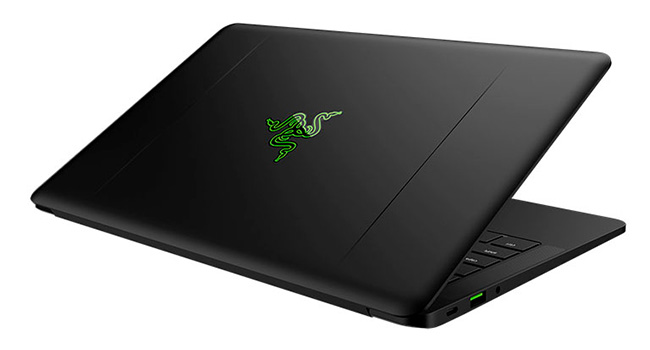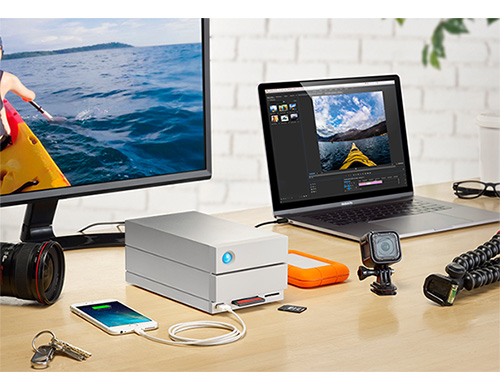Our Aim
To provide you with an overview on New And existing technologies, hopefully helping you understand the changes in the technology. Together with the overviews we hope to bring topical issues to light from a series of independent reviewers saving you the time And hassle of fact finding over the web.
We will over time provide you with quality content which you can browse and subscribe to at your leisure.
TekSpek 's

Thunderbolt 3
Date issued:
The PC ecosystem thrives because it is based on continual improvement. As a pertinent case in point, compared to 10 years ago, the compute performance available from the latest slew of CPUs and GPUs is unrecognisable. Storage has also increased massively in speed thanks to new interfaces such as NVMe M.2, while the humble USB interface's speed has risen from 480Mb/s present on USB 2 to 10Gb/s nominally available on USB 3.1 Gen 2 - a 21x improvement that makes moving massive files far less of a chore.
Yet USB is not the only means by which to move data around a modern PC. In 2009, Intel developed Thunderbolt technology. This one-cable conduit was different from others insofar as it carried both data and video streams concurrently. Whilst it is true to say that Thunderbolt hasn't achieved the same levels of ubiquity as USB, primarily due to licensing costs, subsequent versions have become far more appealing and accepted by premium laptop makers en-masse.
Thunderbolt is in its third generation now, so in this TekSpek we will explain how it works, its benefits, and how we see the future for the fast connection.
Thunderbolt 3 - the smartest, most efficient yet
Intel made the decision to enable the Thunderbolt 3 protocol to support transfers over USB for the first time. Thunderbolt 3 uses the same USB Type-C connector that you see on most premium motherboards and laptops. It is important to understand that just because a machine has a USB Type-C connector, that doesn't mean it also features Thunderbolt 3 - support is on a case-by-case basis.

The tiny Thunderbolt 3 connector, run via USB Type-C, is to the left of the Razer Blade Stealth's green USB 3 Type-A port.
Thunderbolt 3 works by mating the USB Type-C connector to a controller chip code-named Alpine Ridge. It is this controller that provides the brains for the connection, and Alpine Ridge doubles the previous generation's bandwidth to, now, 40Gb/s (5GB/s) whilst cutting power consumption in half. It can also concurrently drive two external displays at a 4K resolution running at 60Hz. Users just wanting to drive a single display can do so at 4K/120 or 5K/60.
In addition, the Alpine Ridge controller can also support other video connectors such as DisplayPort 1.2, HDMI 2.0 and transfer protocols such as PCIe 3.0, making it a very flexible choice for laptop and peripheral makers who need both data and video transmission on one cable.
Though Thunderbolt 3 doesn't support much power delivery on its own, it can facilitate up to 100W by jumping on the back of USB Power Delivery technology inherent in the USB Type-C specification. This is why you often see the same Thunderbolt 3 port also able to charge and power Ultrabooks and high-performance peripherals. Thunderbolt 3 is backwards-compatible with previous generations of Thunderbolt, though to do so one must invest in various adapters.

A LaCie 2big Dock 20GB enclosure hooked up to a Thunderbolt 3-equipped laptop
Real-world examples; broad industry support
Thunderbolt 3 makes most sense when pairing high-speed external devices to a laptop or PC. The ultra-fast transfer speeds of up to 5GB/s enables multi-GB files to be moved across quickly, with the inhibiting factor being the sequential throughput of the drives far more so than any limitations posed by Thunderbolt 3.
And having the ability to transfer both data and video over one cable means the LaCie dock, shown in the picture above, can also output to a monitor via its DisplayPort connector. The Thunderbolt 3 ecosystem also allows for devices to be daisy-chained together whilst still using one cable to the PC, meaning that a further five docks can be connected in tandem easily and efficiently.
Thunderbolt 3 has been shipping in Microsoft-based laptops since December 2015. All of the major players in the market - Dell, HP, Lenovo, Asus, Gigabyte, et al - have multiple laptops featuring the port, most typically found on thin-and-light Ultrabooks. Run over USB Type-C, the same port also usually provides power to the machine.
Apple has also rubber-stamped Thunderbolt 3 by implementing it in the MacBook Pro release of October 2016, while the latest version of the iMac Pro, announced in April 2017, houses four Thunderbolt 3 ports as standard.
Though not as popular on the motherboard market, due to present licensing costs, which we will talk about below, premium boards in the high-end desktop category tend to have a Thunderbolt 3 header to which an optional PCIe-riding board can be attached. These types of solutions are becoming more common on workstations.
The Future
Intel wants Thunderbolt 3 to become far more pervasive, emulating the success achieved by USB. To this end, in May 2017, the company announced that the use of the technology will become royalty-free for leading device makers starting in 2018. These manufacturers still need to purchase the Alpine Ridge controller chip from Intel, but there will be no other charges, thus hopefully reducing the price of Thunderbolt 3-equipped devices and storage solutions in the near future.
Thunderbolt 3 is the fastest, most efficient implementation of the Intel-owned technology thus far. Riding on USB Type-C and able to transfer data at up to 5GB/s whilst also running multiple streams of ultra-high-resolution video over the same single cable, it remains an excellent fit for digital content creators who want access to their footage with the minimum of fuss and maximum speed.
Scan expects to see Thunderbolt 3 connectors to become more popular in 2018, so if you are looking for high-speed external storage or a premium portable laptop soon, make sure it has a Thunderbolt 3 port as standard.